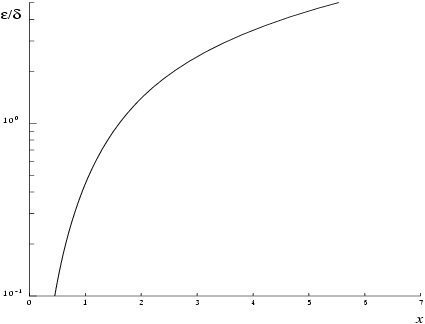s18ae returns the value of the modified Bessel function .
 Syntax
Syntax
| C# |
|---|
public static double s18ae( double x, out int ifail ) |
| Visual Basic |
|---|
Public Shared Function s18ae ( _ x As Double, _ <OutAttribute> ByRef ifail As Integer _ ) As Double |
| Visual C++ |
|---|
public: static double s18ae( double x, [OutAttribute] int% ifail ) |
| F# |
|---|
static member s18ae : x : float * ifail : int byref -> float |
Parameters
- x
- Type: System..::..DoubleOn entry: the argument of the function.
- ifail
- Type: System..::..Int32%On exit: unless the method detects an error or a warning has been flagged (see [Error Indicators and Warnings]).
Return Value
s18ae returns the value of the modified Bessel function .
 Description
Description
s18ae evaluates an approximation to the modified Bessel function of the first kind .
Note: , so the approximation need only consider .
The method is based on three Chebyshev expansions:
For ,
For ,
For ,
For small , . This approximation is used when is sufficiently small for the result to be correct to machine precision.
For large , the method must fail because of the danger of overflow in calculating .
 References
References
Abramowitz M and Stegun I A (1972) Handbook of Mathematical Functions (3rd Edition) Dover Publications
 Error Indicators and Warnings
Error Indicators and Warnings
Errors or warnings detected by the method:
- is too large. On failure the method returns the approximate value of at the nearest valid argument. (see the Users' Note for your implementation for details)
 Accuracy
Accuracy
Let and be the relative errors in the argument and result respectively.
If is somewhat larger than the machine precision (i.e., if is due to data errors etc.), then and are approximately related by:
Figure 1 shows the behaviour of the error amplification factor
However if is of the same order as machine precision, then rounding errors could make slightly larger than the above relation predicts.
For small the amplification factor is approximately , which implies strong attenuation of the error, but in general can never be less than the machine precision.
For large , and we have strong amplification of errors. However the method must fail for quite moderate values of , because would overflow; hence in practice the loss of accuracy for large is not excessive. Note that for large the errors will be dominated by those of the standard function exp.
 Parallelism and Performance
Parallelism and Performance
None.
 Further Comments
Further Comments
None.
 Example
Example
This example reads values of the argument from a file, evaluates the function at each value of and prints the results.
Example program (C#): s18aee.cs
